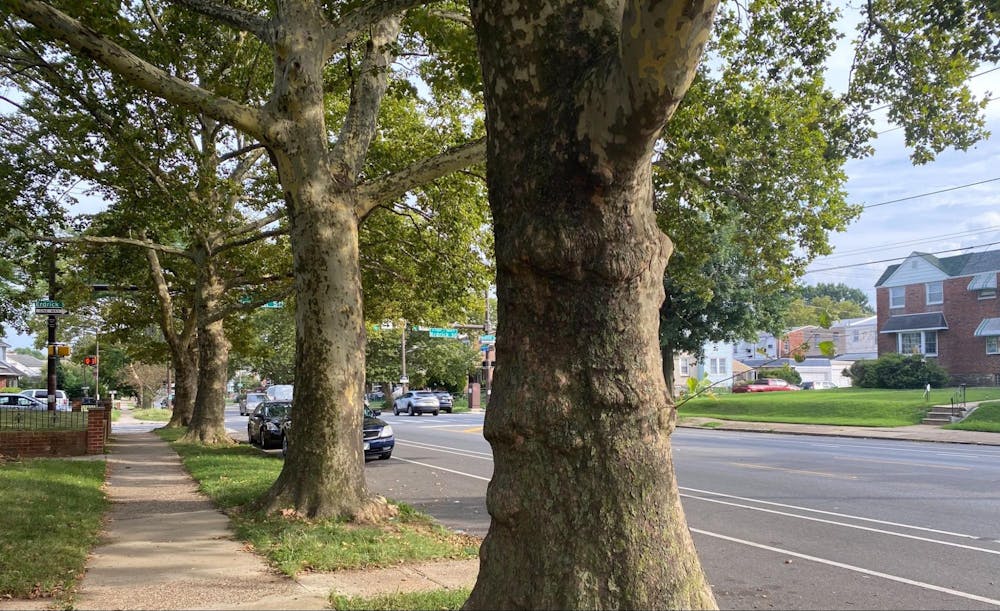Smoke from the Canadian wildfire impacted Philadelphia’s air quality, and subjected the city to an unhealthy level of PM2.5 for an extended period.
PM2.5 is a type of pollutant that can be solid or liquid, is less than 2.5 micrometers and hence can enter lungs and harm the human body.
The poor air quality affected people, particularly those who have sensitive respiratory systems. An invisible threat lurked within the city, causing life-threatening situations and daily inconvenience. There was an increase in the number of people seeking medical attention due to wheezing, coughing, and chest pain.
Dr. Nannapaneni, an pediatric allergy and immunology physician at Lankenau Medical Center (an acute care hospital and medical complex located just outside the western city limits of Philadelphia) said, “We only have a lot of patients come during the spring when the pollen count is very high. But then once we got the Canadian wildfire from June to July, there are a lot more issues in asthma that we are seeing typically come in with symptoms such as coughing, or wheezing, or chest tightness, or shortness of breath.”
The American Lung Association provided detailed information related to air pollution and the impact of common pollutants. According to them, air pollution refers to the contamination of the indoor or outdoor environment due to the presence of harmful substances and pollutants in the air. Two common types of pollutants are PM2.5 particles and ozone.
PM2.5 is considered dangerous because it is so small that it can bypass our body’s defense, such as noise hair, and get into our lungs, and reach the alveoli and enter the bloodstream. This pollutant is mainly emitted by factories, power plants, wildfires, etc.
Ozone, also referred to as smog or bad ozone, is formed at ground level when pollutants emitted by factories, power plants, and cars, react in the presence of light. It is a gaseous pollutant, and is composed of three oxygen atoms (O3). It can irritate the respiratory system and cause inflammation, throat and chest discomfort, and breathing difficulties.
Both pollutants are harmful to the human body after inhalation. Because our lungs are sensitive to the pollutants in the air, the pollutants can cause irritation and inflammation, which dysfunctions the lungs.
Enjoy what you're reading?
Signup for our newsletter
Dr. Nannapaneni explained, “It limits how well the lung normally functions; typically, it is supposed to exchange oxygen and carbon dioxide; if there is a lot of irritation and inflammation, it becomes harder to do that.”
According to the American Lung Association, years of scientific research have clearly established that particle pollution and ozone are a threat to human health, and it can increase the risk of premature birth, cause or worsen lung and heart disease, and shorten lives.
Researchers estimate that PM2.5 is responsible for nearly 48,000 premature deaths in the United States every year.
Poor air quality could cause people with lung conditions to aggravate their disease.
Lorraine Ustaris, a film production and journalism teacher who works in the School District of Philadelphia, is a patient of Dr. Nannapaneni. As a person with asthma, she shared her experience in the summer. “For the majority of summer so far”, she said, “I have been taking high doses of oral steroids because I am having very sharp chest pain and am unable to breathe deeply. I was experiencing near suffocation.”
Other than the life-threatening condition that poor air quality has caused, it also limits the outdoor activity of people with asthma.
Ustaris expressed how poor air quality prevents her from enjoying outdoor activities. She said, “I love nature and am always outside, but because of the air quality, I wasn’t able to go out for most of the beginning of the summer, which was really depressing.”
“I never paid attention to air quality as much as I do now”.
She shared using AirNow, a one-stop source for air quality data, to be updated about the air quality. AirNow provides air quality information at state, national, and world levels. An interactive map is provided for better visualizing the air quality in different areas.
She said, "On days when there are long stretches of time when I couldn't go outside, I started to look at the map so I could find places with better air quality and drive there, so that I could actually be outside.”
Global warming shows its disadvantages and threats in recent years. One threat it gives to organisms in the world is the extreme heat and more lighting, which lead to frequent wildfires.
According to the World Health Organization, “wildfire smoke is a mixture of hazardous air pollutants, such as PM2.5, NO2, ozone, aromatic hydrocarbons, or lead.” And wildfires would also release large quantities of greenhouse gases such as carbon dioxide, leading to further aggravation of climate change.
AirNow provided data about past air quality in Philadelphia, and provided evidence that the Canadian wildfire which happened in June led to half of the moderate or unhealthy air quality in the last 2 months.
As high temperature records are broken and the number of high temperature days increases, the topic of whether schools have enough air conditioners for children to receive education in a suitable environment has been a concern for people. And the concern about whether the school will manage high temperatures and poor air quality also becomes an issue.
Ustaris also shared her concerns about children in urban areas: “For kids who are already living in an environment that could cause them to have respiratory problems, where they have rotten infestations, mice, asbestos, mold, lack of air conditioning. So, the days we have school are really warm days. During the wildfire period, some schools, despite being in the red level, were forced to hold classes, and schools had to have their windows open because they don’t have air conditioning.”
About the author:
Wendy Lam is a high school student living in Philadelphia. She was born in Hong Kong and lived there until she moved to Philadelphia. This is her first time writing a news report.




